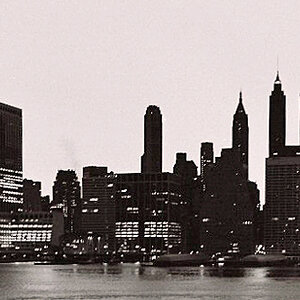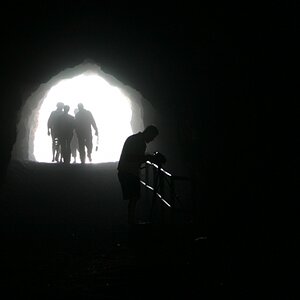- Joined
- Sep 2, 2005
- Messages
- 14,455
- Reaction score
- 3,328
- Can others edit my Photos
- Photos OK to edit
Ok. So a woman I work with is NOT a camera buff, but takes pictures of people at work for passports. She is using a Canon 20D, if you can believe that. Kinda overkill.  She also has a Canon Rebel XTi which she brings in and uses on occasion. (even that is overkill for what she's doing, but she's kind of enthusiastic about photography even though she's pretty clueless at it, so whatever... let the woman have her fun.)
She also has a Canon Rebel XTi which she brings in and uses on occasion. (even that is overkill for what she's doing, but she's kind of enthusiastic about photography even though she's pretty clueless at it, so whatever... let the woman have her fun.) 
Anyway, she was graussing over shadowy eyes and stuff without the flash, and graussing over the zombie look people get when she uses the onboard flash. She wanted nicer pictures. Fair enough. I suggested she look into an external flash that she can bounce off the ceiling. She says "Oh! I have one of those at home! I'll bring it in and we can try again!" Cool.
So today she brings in her flash... a 430EX I believe it was. I had also brought in my Nikon D300 and my SB-600. We tried a quick pic using that setup and I showed it to her. Perfect. No shadowy eyes, nice even light, etc. She was all excited. So we pop her 430 onto her flash, she hands me a tupperware diffuser that she also bought (I was pleasantly surprised to see this), we pointed the flash at the ceiling, and took the pic.
BLECH. Horrible. The shot was totally underexposed and looked awful.
I futzed and futzed with the thing. I took the diffuser off... no good. I tried a different bounce angle... no good. The only thing I could do to make it work was to set the camera in manual mode and intentionally meter to overexpose, or to point the flash (with diffuser) directly at the person (which actually had far better results than I expected, but I still wouldn't consider this ideal).
I was also looking for ways I could up the power on the flash, but really couldn't find anything on it... and in a quick search I didn't see any manuals on Canon's website, which was irksome.
BTW, we had the same results on both the 20D and the XTi.
So am I doing something seriously stupid here?
BTW... I LOVE that the 430 appears to have a mechanical switch to go into slave mode. That's REALLY nice.
(which I don't want to make her do because she's really new to this stuff and not really someone who "gets it" if you know what I mean)
 She also has a Canon Rebel XTi which she brings in and uses on occasion. (even that is overkill for what she's doing, but she's kind of enthusiastic about photography even though she's pretty clueless at it, so whatever... let the woman have her fun.)
She also has a Canon Rebel XTi which she brings in and uses on occasion. (even that is overkill for what she's doing, but she's kind of enthusiastic about photography even though she's pretty clueless at it, so whatever... let the woman have her fun.) Anyway, she was graussing over shadowy eyes and stuff without the flash, and graussing over the zombie look people get when she uses the onboard flash. She wanted nicer pictures. Fair enough. I suggested she look into an external flash that she can bounce off the ceiling. She says "Oh! I have one of those at home! I'll bring it in and we can try again!" Cool.
So today she brings in her flash... a 430EX I believe it was. I had also brought in my Nikon D300 and my SB-600. We tried a quick pic using that setup and I showed it to her. Perfect. No shadowy eyes, nice even light, etc. She was all excited. So we pop her 430 onto her flash, she hands me a tupperware diffuser that she also bought (I was pleasantly surprised to see this), we pointed the flash at the ceiling, and took the pic.
BLECH. Horrible. The shot was totally underexposed and looked awful.
I futzed and futzed with the thing. I took the diffuser off... no good. I tried a different bounce angle... no good. The only thing I could do to make it work was to set the camera in manual mode and intentionally meter to overexpose, or to point the flash (with diffuser) directly at the person (which actually had far better results than I expected, but I still wouldn't consider this ideal).
I was also looking for ways I could up the power on the flash, but really couldn't find anything on it... and in a quick search I didn't see any manuals on Canon's website, which was irksome.
BTW, we had the same results on both the 20D and the XTi.
So am I doing something seriously stupid here?
BTW... I LOVE that the 430 appears to have a mechanical switch to go into slave mode. That's REALLY nice.
(which I don't want to make her do because she's really new to this stuff and not really someone who "gets it" if you know what I mean)


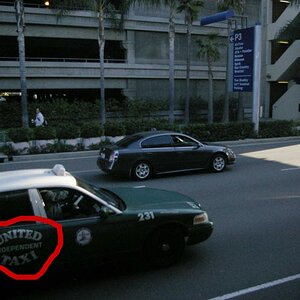
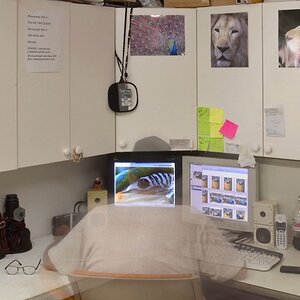
![[No title]](/data/xfmg/thumbnail/41/41781-7dcfd2ee71d4a453b4ad9fb5c7e723f1.jpg?1619739890)
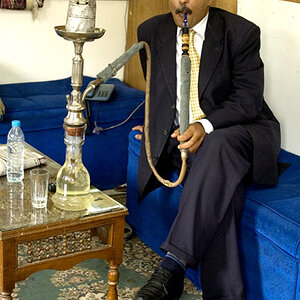


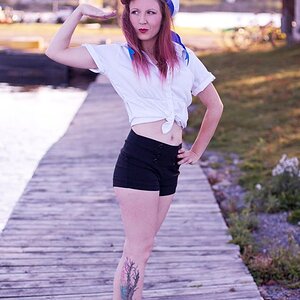
![[No title]](/data/xfmg/thumbnail/31/31509-b8abaec96e6e375688e269bc89f47652.jpg?1619734858)

